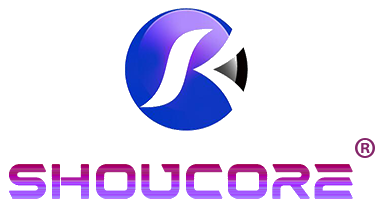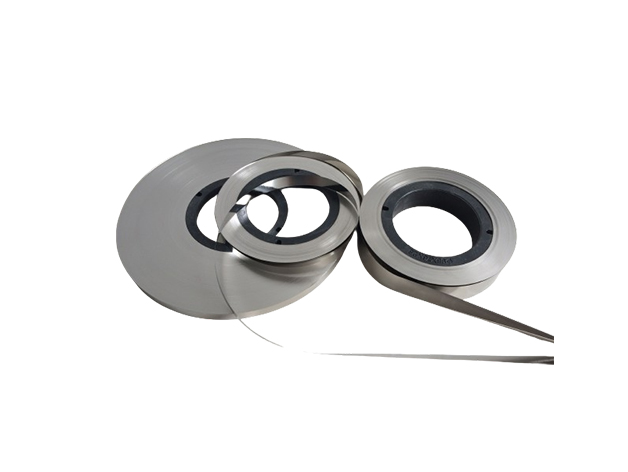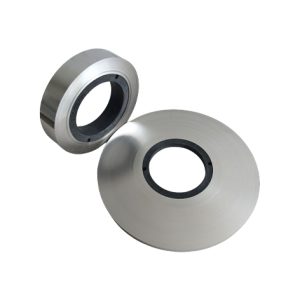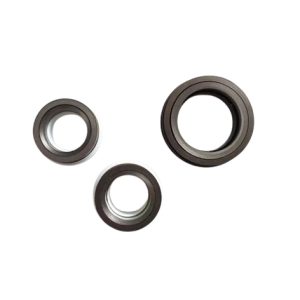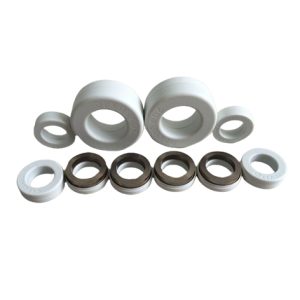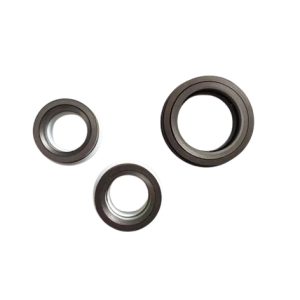Fe-based Nanocrystalline Alloy Ribbon
Nanocrystalline Alloys Ribbon has the outstanding advantages that it combines the high saturation magnetic induction (Bs) of the Iron-based amorphous alloy and the high magnetic permeability and low loss of the Cobalt-based amorphous alloy, which can meet the magnetic properties requirements in high frequency and low loss.
- Trade Mark: SHOUCORE
- Cores Size: Standard or Customized Dimensions
- Certificates: ISO 9001:2015, RoHS, REACH
- Payment Terms: T/T or L/C
- Delivery time: Samples: 3~5 days; Batches: 7~30 days
Fe-based Nanocrystalline Alloy Ribbon:
The production process of nanocrystalline alloys ribbon is similar with the amorphous alloys as we mentioned before,but the compositions of nanocrystalline alloys is different from amorphous alloys. The special soft magnetic properties are set after a crystallization heat treatment. So nanocrystalline alloys has the outstanding advantages that it combines the high saturation magnetic induction (Bs) of the Iron-based amorphous alloy and the high magnetic permeability and low loss of the Cobalt-based amorphous alloy, which can meet the magnetic properties requirements in high frequency and low loss.
Benefits:
- The nanocrystalline alloy ribbon with High Saturate induction (1.25T) and High initial magnetic permeability(>80000), which can meet the design of high frequency,miniaturization and low cost.
- Nanocrystalline alloys with low core loss as 50w/kg at 100KHz, 300mT, and it reduces the temperature rise very well.
- The coercive force (Hc) could lower as 1.5A/m, and the efficiency of components could be improved.
- The saturation magnetostriction close to zero, so it can lower the working noise effectively.
- The magentic properties of nanocrystalline alloys is stable, and the rate of change less than 10% at -50℃~150℃.
- The nanocrystalline alloys has the excellent magnetic permeability and high impedance characteristics in a wide range of frequency.
- Besides, it is flexible to control the magnetic properties B-H curve by the magneti-field annealing, which could meet the customer’s requirements.
Physical Properties:
| Item | Performance |
| Material Grade | 1K107/A/B/D |
| Material Ingredient | Fe, Cu, Nb, Si, B |
| Material Thickness | 20±2um |
| Saturate induction Bs(T) | 1.25 |
| Curie temperature Tc(℃) | 570 |
| Crystallization Tx(℃) | 530 |
| Coercivity Hc(A/m) | <1.5 |
| Hardness(Hv) | 880 |
| Stacking Factor | 75-82% |
| Magnetostriction (λs) | 1.0×10 -6 |
| Density ρ(g/cm3) | 7.18 |
| Resistivity δ(μΩ.cm) | 120 |
Magnetic Properties Of Different Materials:
| Material | Composition (wt.%) | Initial Permeability(ui) | (Br/Bs)% | Hc(A/m) | Bs(T) | ρ(μΩ.cm) |
| 1K107 | Fe, Cu, Nb, Si, B | 50000-100000 | 45-65 | <1.5 | 1.25 | 120 |
| 1K101 | Fe, Si, B | 5000 | 85 | <4 | 1.56 | 130 |
| Cobalt-Based Amorphous Alloys | 50Co | 300000 | 90 | <1.5 | 0.5-0.9 | 140 |
| CRGO Silicon Steel | 3Si, Fe. | 1400 | / | 7 | 2.01 | 50 |
| 1J84 Permalloy | 4Mo79Ni | 4000 | / | 1 | 0.8 | 58 |
Specifications:
| Material | Model | Width(mm) | Thickness(um) |
| Nanocrystalline Alloy Ribbon | 1k107B | 5 | 20±2 |
| Nanocrystalline Alloy Ribbon | 1k107B | 6 | 20±2 |
| Nanocrystalline Alloy Ribbon | 1k107B | 8 | 20±2 |
| Nanocrystalline Alloy Ribbon | 1k107B | 10 | 20±2 |
| Nanocrystalline Alloy Ribbon | 1k107B | 15 | 20±2 |
| Nanocrystalline Alloy Ribbon | 1k107B | 20 | 20±2 |
| Nanocrystalline Alloy Ribbon | 1k107B | 25 | 20±2 |
| Nanocrystalline Alloy Ribbon | 1k107B | 30 | 20±2 |
| Nanocrystalline Alloy Ribbon | 1k107B | 35 | 20±2 |
| Nanocrystalline Alloy Ribbon | 1k107B | 40 | 20±2 |
| Nanocrystalline Alloy Ribbon | 1k107B | 45 | 20±2 |
| Nanocrystalline Alloy Ribbon | 1k107B | 50 | 20±2 |
| Nanocrystalline Alloy Ribbon | 1k107B | 55 | 20±2 |
Note: Nanocrystalline Alloy Ribbon can be customized according to the specific size and performance requirements of users.
